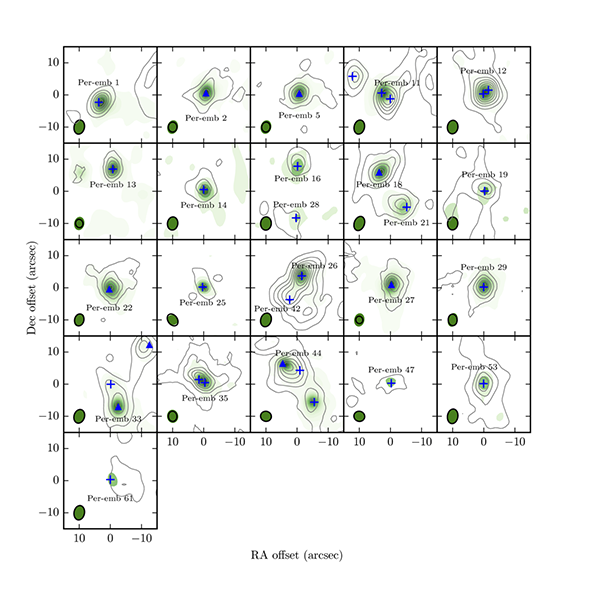Star Formation: Low-Mass:
Protostellar accretion history traced with chemistry
The luminosities of embedded protostars is much lower than expected from the energy release due to the steady collapse of dense cores. An appealing solution to this problem is that accretion is episodic, with protostars undergoing short periods of high accretion rates that build up their mass. A clever way to characterise protostellar accretion histories towards individual sources makes use of the sublimation and freeze-out chemistry of the CO molecule, which is observed in the gas phase at millimeter wavelengths. The SMA can measure the size of the emitting region where CO has sublimated from ice into the gas-phase (via the low optical depth isotopologue C18O), and this may be compared to the size implied by current protostar luminosity. SMA observations of many protostars show CO emission in extended regions that imply the gas was warm enough in the past to sublimate CO beyond the size implied by the current protostar luminosity (Figure 2). This can be direclty attributed to recent accretion events that briefly raised the protostar luminosity in the past (Jorgensen et al. 2015, Frimann et al. 2017).

SMA images of C18O 2-1 emission (contours) and dust continuum emission (colour map) of protostars in Perseus. The blue symbols mark the protostar positions revealed by higher resolution centimeter emission, with crosses indicating single protostars and triangles indicating multiple systems. The C18O emission size reflects the region where the protostar has heated the gas to high enough temperatures to release CO from icy dust grains; this provides an indirect measurement of the affect of accretion bursts on protostar luminosity.
